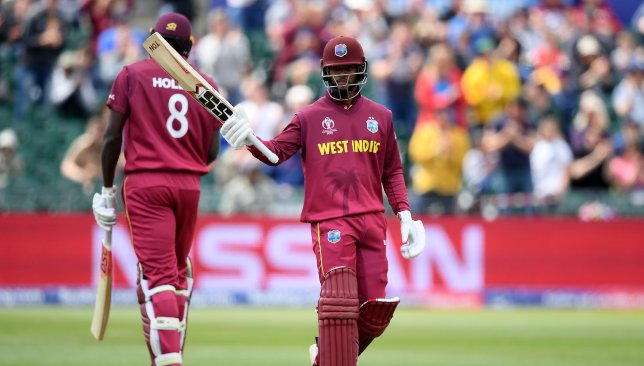
Shai Hope’s century in Chennai in the first match of the ODI series against India on Sunday proved to be a match-winning knock, as he held one end up while Shimron Hetmyer carted the Indian bowlers all around the park.
His knock, after wicket-keeping for 50 overs, though gritty was also painfully slow.
He reached his half-century off 92 deliveries and then reached triple figures off 149 deliveries. The knock ranked ninth in the list of slowest ODI centuries.
Slowest centuries against India in ODIs: (Balls faced)
— Umang Pabari (@UPStatsman) December 15, 2019
166 - David Boon, Hobart, 1991
149 - Shai Hope, Chennai, 2019*
143 - Jacques Kallis, Durban, 2006#INDvWI
Hope’s batting is of a bygone era – grinding the opposition down, getting his eye in and going for quick runs in the final few overs.
The top-order batsman burst onto the scene with twin centuries at Leeds to help his team to a famous Test victory against England. However, two years after that mammoth effort, Hope has only managed four Test half-centuries and has a career average of 27.23 in the longer format.
In T20Is, where he has only played as an opener, Hope averages 21.63. It is between these two formats, in this mercurial West Indies ODI set up, has the Barbadian carved a niche for himself with his monk-like approach to batting against the new ball and accelerating ever so slightly in the death overs.
He is the third-highest run-getter in ODIs in 2019 with 1,225 runs, behind only Virat Kohli (1,268) and Rohit Sharma (1,292), with an astounding career average of 52.49.
Many could argue that the 26-year-old’s batting style complements the approach of the rest of the batsmen which usually includes swashbuckling strokemakers like Kieron Pollard, Nicholas Pooran, Evin Lewis, Shimron Hetmyer and Jason Holder.
During the first ODI, the Windies were chasing a total of 288, which meant that the required run-rate was below six at the start.
In the 218-run association with Hetmyer, he quietly aggregated 72 runs off 119 deliveries. His partner’s big-hitting prowess ensured that the required run-rate never shot up to alarming levels.
Shimron Hetmyer's ODI centuries - no. of balls taken
— Bharath Seervi (@SeerviBharath) December 15, 2019
74 balls
78 balls
82 balls
84 balls
85 balls
He has scored 5 centuries and all within 85 balls. #IndvWI
However, the opener’s failure to rotate strike can prove detrimental to the team’s cause when they are chasing bigger totals.
During an ODI against India last year at Vishakapatnam, Hope and Hetmyer once again were leading the chase after the hosts had set a target of 322.
It was Hetmyer as usual doing the heavy lifting, scoring 94 in the 143-run partnership. However, when he fell, the visitors needed 101 runs off 18 overs with six wickets in hand.
The situation was trickier than the one at Chennai on Sunday and this time Hope showed enough urgency to help the Windies tie the match. The wicket-keeper batsman scored 62 off 61 deliveries following Hetmyer’s dismissal – a strike-rate that isn’t quite acceptable for a well-set batsman in a steep chase.
Of the eight ODI hundreds scored by the 26-year-old, five have come in the second innings. Only one of those came while chasing a target in excess of 300 and West Indies did not win that game.
In 2019, among the top-10 run-getters in ODIs, only Kane Williamson (75.35) has a lower strike-rate than Hope. However, not only has the New Zealand captain played five innings fewer, his career strike rate is a healthy 81.82, a lot higher than the West Indian’s 73.81.
During the T20I series against India that preceded the ongoing ODI series, after the West Indies chased down a total in the second T20I, the Indian top-order ensured that they notched a total well beyond the reach of their opponents in the final T20I to win the series.
In the next game, if India were to bat first and post a total well in excess of 300, Hope’s approach could cost the Windies.